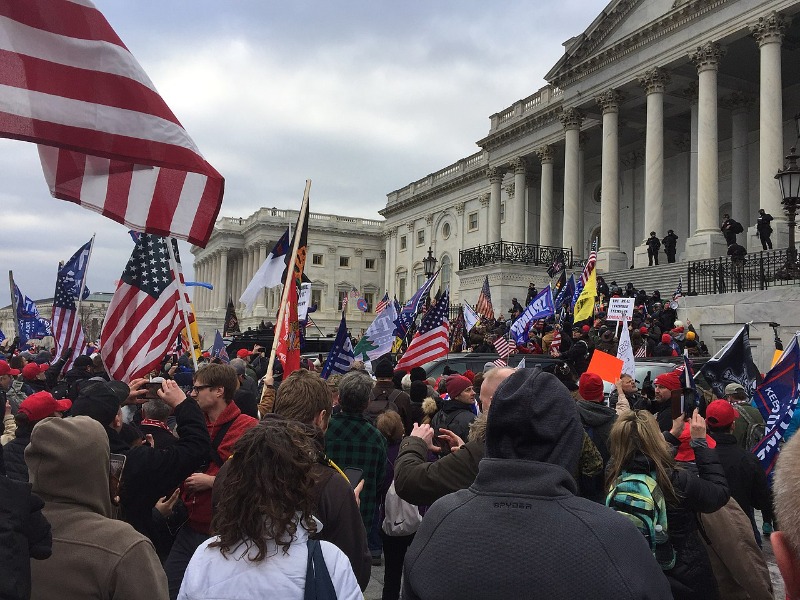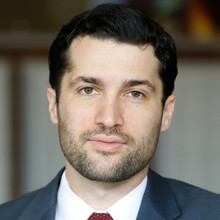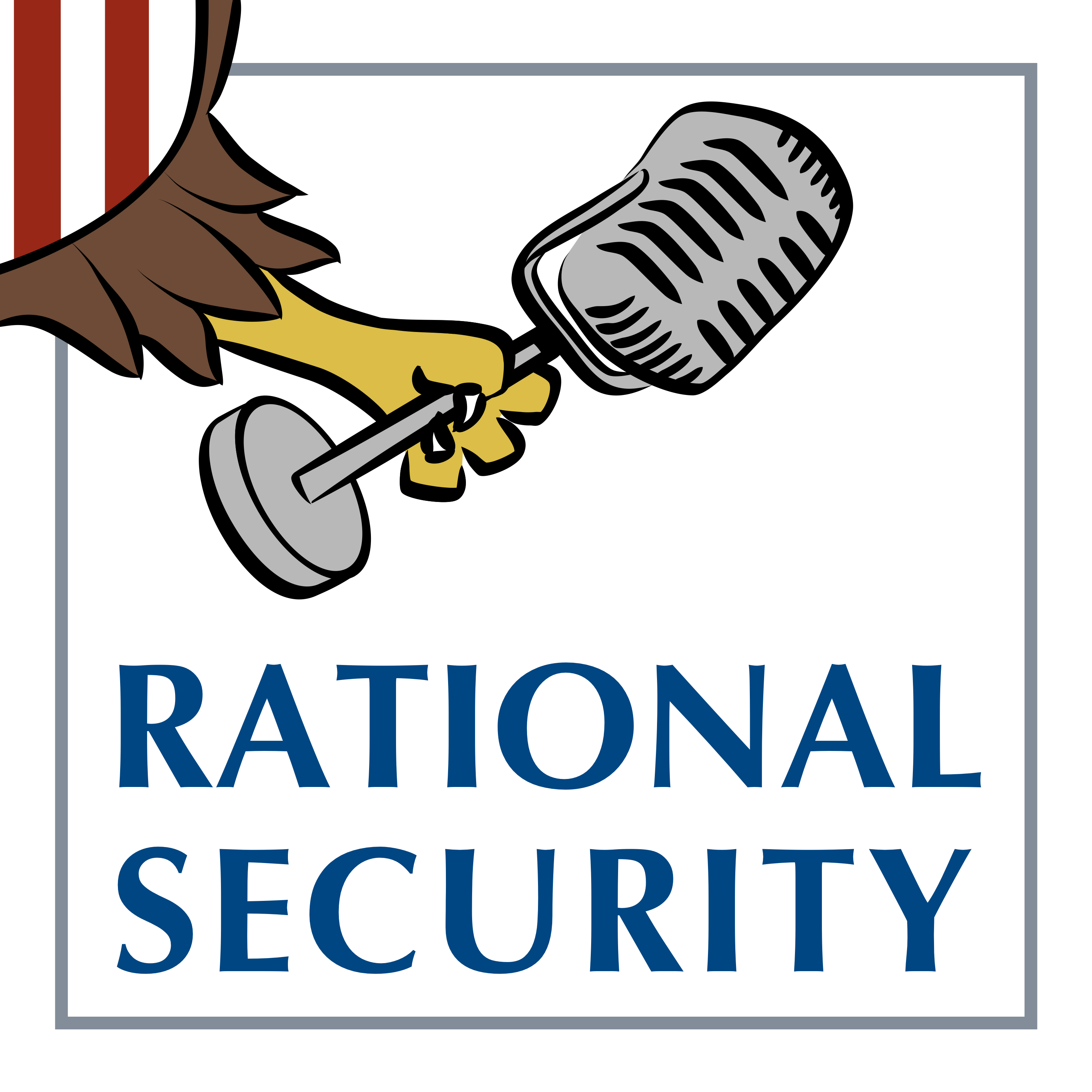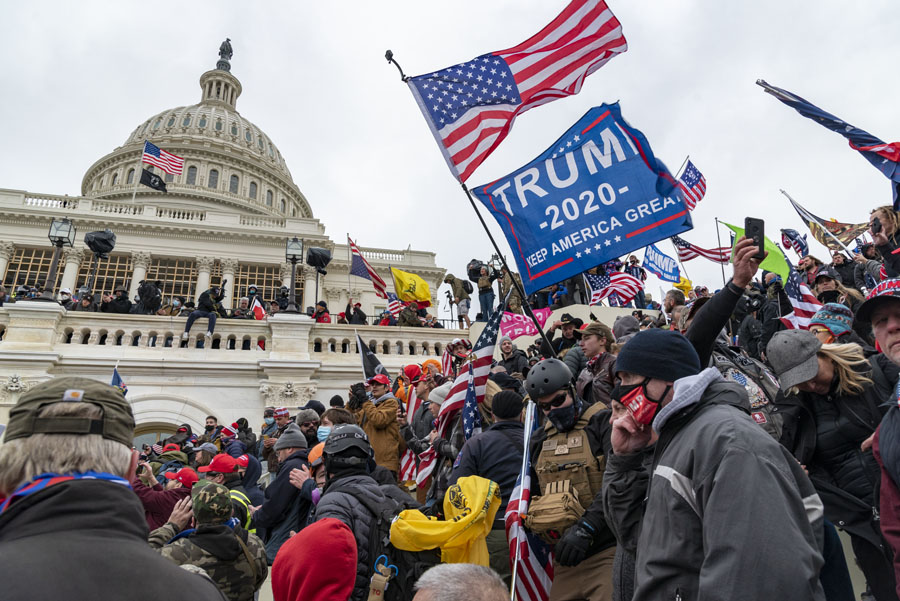Seditious Conspiracy Is the Real Domestic Terrorism Statute
To answer the question of whether the United States needs a new domestic terrorism statute, we first have to explore how well, if at all, seditious conspiracy is already performing as a substitute.

Published by The Lawfare Institute
in Cooperation With

Domestic terrorism has an unusual status in federal criminal law. On the one hand, the law defines domestic terrorism, but only for the purpose of authorizing law enforcement investigations; unlike international terrorism, domestic terrorism itself is not a criminal offense, and thus one cannot be convicted for the crime of domestic terrorism. Reflecting this gap, the past several years have seen an increasing debate over whether or not Congress should substantively criminalize domestic terrorism. Some argue that Congress should; others argue that the distinction between domestic and international terrorism unfairly singles out immigrants and ethnic and religious minorities; and still others argue that a domestic terrorism statute would pose unnacceptable threats to civil liberties.
All sides in this debate agree that there is currently no criminalization of “domestic terrorism” as such. But this overlooks the fact that much of the substance of a domestic terrorism statute is already covered by and prosecuted under the crime of seditious conspiracy. Thus, to answer the question of whether the United States needs a new domestic terrorism statute, we first have to explore how well, if at all, seditious conspiracy is already performing as a substitute.
The seditious conspiracy statute was enacted during the Civil War and prohibits conspiracies
to overthrow, put down, or to destroy by force the Government of the United States, or to levy war against them, or to oppose by force the authority thereof, or by force to prevent, hinder, or delay the execution of any law of the United States, or by force to seize, take, or possess any property of the United States contrary to the authority thereof.
The core of the seditious conspiracy offense, as the Supreme Court held in the 1886 case Baldwin v. Franks (and as courts have reaffirmed since then), is the use of force “to resist some positive assertion of authority by the government.” The statute reflects the democratic political norm that changes in policy should be pursued through the political process, or at most through nonviolent protest and resistance, not through violence.
But this norm is also what underlies much of the federal domestic-terrorism definition, which was added after 9/11 by the USA Patriot Act:
(5) the term “domestic terrorism” means activities that—
(A) involve acts dangerous to human life that are a violation of the criminal laws of the United States or of any State;
(B) appear to be intended—
(i) to intimidate or coerce a civilian population;
(ii) to influence the policy of a government by intimidation or coercion; or
(iii) to affect the conduct of a government by mass destruction, assassination, or kidnapping; and
(C) occur primarily within the territorial jurisdiction of the United States.
In particular, seditious conspiracy and domestic terrorism overlap where the conduct is a conspiracy, is dangerous to human life, and is intended to change government policy or conduct.
Indeed, when one looks at the modern history of seditious conspiracy prosecutions, the federal definition of domestic terrorism fits surprisingly well. For example, in 1954, Puerto Rican nationalist extremists stormed the Capitol and shot five congressmen. They were convicted of seditious conspiracy, but domestic terrorism is an equally good description of their actions: to “influence the policy” of the government with respect to Puerto Rican independence by the “intimidation or coercion” of an armed attack on the Capitol. Even in failed seditious conspiracy cases—as in the government’s prosecution a decade ago of the far-right Christian Hutaree militia group for planning to assasinate police officers, or the 1988 trial of white supremacists in Fort Smith, Arkansas—the defendants’ alleged conduct would comfortably fit under a definition of domestic terrorism.
This pattern continues to the present, with the ongoing seditious conspiracy prosecution of Stewart Rhodes and several of his fellow Oath Keepers. The core of the conduct alleged is that Rhodes and the defendants planned to use force—bringing knives to the Capitol as well as firearms and ammunition to “quick reaction force” areas outside Washington, D.C.—to prevent the peaceful transfer of power. If this isn’t domestic terrorism, then what is?
Reinterpreting the seditious conspiracy statute as a domestic anti-government terrorism statute has another benefit: It helps limit the scope of what is, on its face, an extraordinarily broad statute. Seditious conspiracy criminalizes the use of force to hinder the execution of “any law” or to interfere with “any property of the United States.” Indeed, one of the dissenters in Baldwin, Justice Stephen Field, argued that the language was broad enough to cover any conspiracy “to defeat the execution of [the United States’s] laws ... and thus permanently deprive others of the rights, benefits, and protection intended to be conferred by such laws.” And even under the Baldwin majority’s narrower construction of the statutory text, there is still substantial uncertainty as to what counts as an attack on the government’s “positive assertion of authority.”
Sometimes this uncertainty cuts in favor of defendants, as in the Hutaree case, in which the court threw out seditious conspiracy charges because the conspiracy at issue was not sufficiently directed against the federal government, even though the defendant’s overall ultimate goal was to engage in a violent confrontation with federal law enforcement. In other circumstances, the broad language of the statute gives an uncomfortable amount of leeway for aggressive prosecutions. For example, when, in the summer of 2020, many cities saw violence and looting in connection with the protests over George Floyd’s murder, the Department of Justice issued a memo to line prosecutors encouraging them to explore seditious conspiracy charges “where a group has conspired to take a federal courthouse or other federal property by force.” It feels like major overkill to use seditious conspiracy, a crime that carries not only a stiff prison sentence but also immense rhetorical condemnation, to punish someone who smashes a federal vehicle. Yet such a prosecution would be plausibly within the scope of the statute.
Compared to seditious conspiracy, the anti-government elements of the domestic terrorism statute are more limited, in at least two respects. First, while seditious conspiracy requires only “force,” the domestic terrorism statute requires criminal acts that are “dangerous to human life.” Second, and more importantly, the domestic terrorism has narrower intent requirements. It is not enough, as with the seditious conspiracy statute, merely to intend to interfere with government action or property; rather, domestic terrorism requires intent to actually change government action or policy.
If I’m right that the best use of seditious conspiracy is to implement the federal definition of anti-government terrorism, how should this implemention be effectuated? One possibility is for courts to do so as a matter of statutory interpretation. The Justice Department could help, in terms of both which defendants it charges with seditious conspiracy and how it crafts its indictments. Over time, courts could gradually transform the common law of seditious conspiracy into a de facto anti-government domestic terrorism statute.
Alternatively, Congress could replace the current statutory definition of seditious conspiracy with those parts of the domestic terrorism definition that relate to anti-government action. In other words, Congress could actually criminalize the conduct described in 18 U.S.C. § 2331(5), with the exception of the intent language in (b)(i), “to intimidate or coerce a civilian population,” since that goes beyond what the current seditious conspiracy law covers. Congress would also have to decide whether to retain the conspiracy requirement, depending on whether it wanted “lone wolf” domestic terrorists to be subject to criminal liability.
Congressional action would have a number of advantages. It would avoid the questionable statutory interpretation that judicial rewriting of seditious conspiracy would entail. It would decrease uncertainty about the scope of the law. And Congress could turn the seditious conspiracy statute into one targeting anti-government domestic-terrorism more quickly and more comprehensively than the court could.
Most importantly, congressional action would have a major expressive effect. It would recognize that, as least as it applies to attacks on the government or in response to government action, domestic terrorism is a serious danger, on par with international terrorism, and would allow official condemnation of certain crimes as not merely violent or obstructive but terroristic. It is true that seditious conspiracy itself carries serious rhetorical weight, but it is ultimately a term of a different age and historical context. The proper contemporary analogue, because it carries the most symbolic weight in contemporary society, is domestic terrorism. Moreover, the unfortunate broader history of sedition prosecutions—from the Alien and Sedition Acts of the Adams administration to the use of the seditious conspiracy statutes to punish objectors to World War I, including socialist leader Eugene Debs—undermines the normative force of calling something sedition. Terrorism, with its clear connection to violence, is a more effective term of contemporary social opprobrium.
To be sure, a wholesale replacement of the seditious conspiracy statute with one modeled on the domestic terrorism definition would raise its own challenges. If Congress, seeking to not expand the scope of existing criminal law, excluded from criminal liability acts meant to “intimidate or coerce a civilian population,” that would leave unaddressed much of the actual violent-extremism threat. For example, the racially motivated murder of nine people at a Black church in Charleston, South Carolina, by the white supremacist Dylann Roof, while falling under the current federal definition of domestic terrorism, would not fall under a domestic-terrorism law that tried to mirror the current scope of seditious conspiracy. Such a law would thus reinforce the problematic legal distinction between international and domestic terrorism. At the same time, Congress simply replacing seditious conspiracy with the current domestic-terrorism definition would substantially expand the scope of federal criminal law, raising legitimate civil liberties concerns.
There are no easy answers when it comes to dealing with the growing threat of anti-government extremism. But in the meantime, seditious conspiracy will remain a key tool in the government’s effort to combat this threat. There’s no doubt that the statute can reach much of this conduct; whether it can do so without an unacceptable risk of government overreach remains to be seen.



.jpeg?sfvrsn=6117c6bf_4)

